Feature
Skynet Junior Scholars
Professional Development to Support STEM Exploration in a Variety of Settings
Connected Science Learning November 2016-January 2017 (Volume 1, Issue 2)
By Kathryn Williamson, Sue Ann Heatherly, Vivian Hoette, Eva Erdosne Toth, and David Beer

Skynet Junior Scholars (SJS) is an online astronomy program that allows youth to conduct inquiry-based investigations. This article describes the SJS professional development model (SJS PD) that helps nonschool educators to work in the formal school environment. The model uses a modified Technological Pedagogical Content (TPACK) framework to characterize the professional development training. Included are adaptations and lessons learned, as well as three case studies that illustrate how the SJS PD prepared nonschool educators to develop pathways to bridge in-school and out-of-school STEM learning.
Informal learning opportunities are increasingly being recognized as important for youth participation in authentic experiences at the intersection of science, technology, engineering, and math (STEM) (Dorsen, Carlson, and Goodyear 2006). These experiences may involve specialized equipment and dedicated time for learners to gain familiarity with the relevant scientific and engineering practices (i.e., designing experiments on their own, struggling to make sense of data, learning from their own mistakes and the results of peers), which often go beyond the classroom. However, the educators who guide the implementation of these informal efforts may need specific training, and they may need to be creative in designing learning experiences under their setting’s unique constraints. Best practices for professional development for classroom teachers include active inquiry opportunities and an emphasis on content and its relevance to the classroom, extended over a long period of time (Birman et al. 2000; Abell and Lee 2008; Darling-Hammond et al. 2009). However, the extant literature on teacher professional development tends to focus only on formal educators. This article draws on our experiences developing a program called Skynet Junior Scholars (SJS) to document how our professional development model engages both informal and formal educators with a range of skill sets. We describe how three SJS educators creatively forged new educational pathways between in-school and out-of-school STEM learning, and we provide lessons learned and recommendations for others.
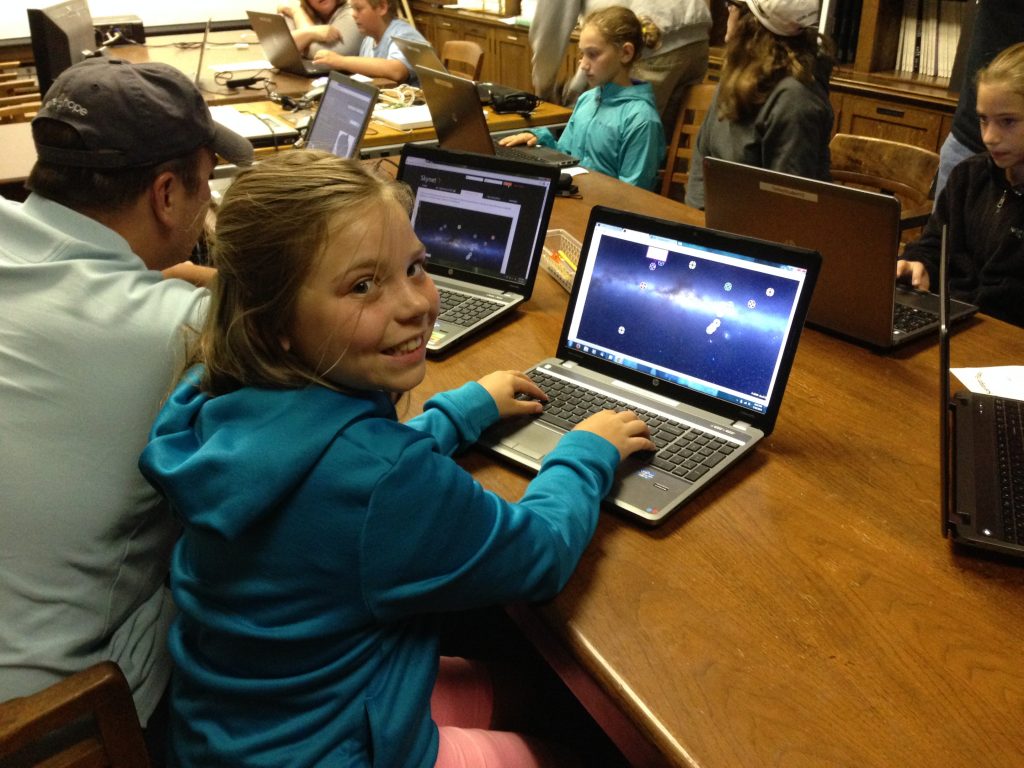
Skynet Junior Scholars is an online program that meets all three dimensions of the Next Generation Science Standards (NGSS Lead States 2013)—disciplinary core ideas, science and engineering practices, and crosscutting concepts—by engaging youth in the collection of astronomical data using the Skynet worldwide network of robotically controlled optical and radio telescopes (see the SJS website and Resources for an example of how SJS activities support the NGSS’s call for three-dimensional learning)[1]. The benefits of remote access to telescopes go well beyond minimizing schools’ investment in expensive technology, as well as safety concerns that arise when students wield heavy equipment. Online telescopes can improve students’ understanding of key concepts, enhance interest across a diversity of learners, and enable a community of practice that “mirrors the collaborative nature of the astronomy research community” (Gould, Dussault, and Sadler 2006, p. 131). By joining SJS, participants are given time to use telescopes around the world, allowing them 24-hour access to the night sky. All users start with roughly 20 minutes of telescope time. Users can also submit a short proposal form to request more (to mimic real scientific practices). The telescope time does not expire, so individuals can use it all at once or spread it out over time. All of the SJS Explorations can be completed within about 15 minutes of telescope time, but some participants might use more than 60 minutes.
This telescope time can be used in a formal setting to collect data for individual research and collaborative projects or in an informal setting simply to explore or to satisfy aesthetic interest. SJS participants can engage in self-paced, inquiry-based explorations and collaborate with others by sharing data products in the online gallery (such as the tricolor image in Figure 1, the series of comet images in Figure 2, and the Pluto video in Resources), and by communicating with peers and professional astronomers in a discussion forum. Furthermore, SJS is accessible to a wide range of learners of different ages, skills, and abilities, including blind and deaf students (Childers et al. 2015; Gartner et al., in press). To date, over 125 educators in 24 states have participated in SJS professional development (34% 4-H venues; 28% museum or interpretive centers; 29% school-based; and 9% in camps, universities, and other venues). Over 1,400 youths have registered for accounts, and SJS participants have requested more than 88,000 optical images and 17,000 radio images from Skynet telescopes. Telescope time for participants is provided free of cost and can be renewed upon request.
Figure 1
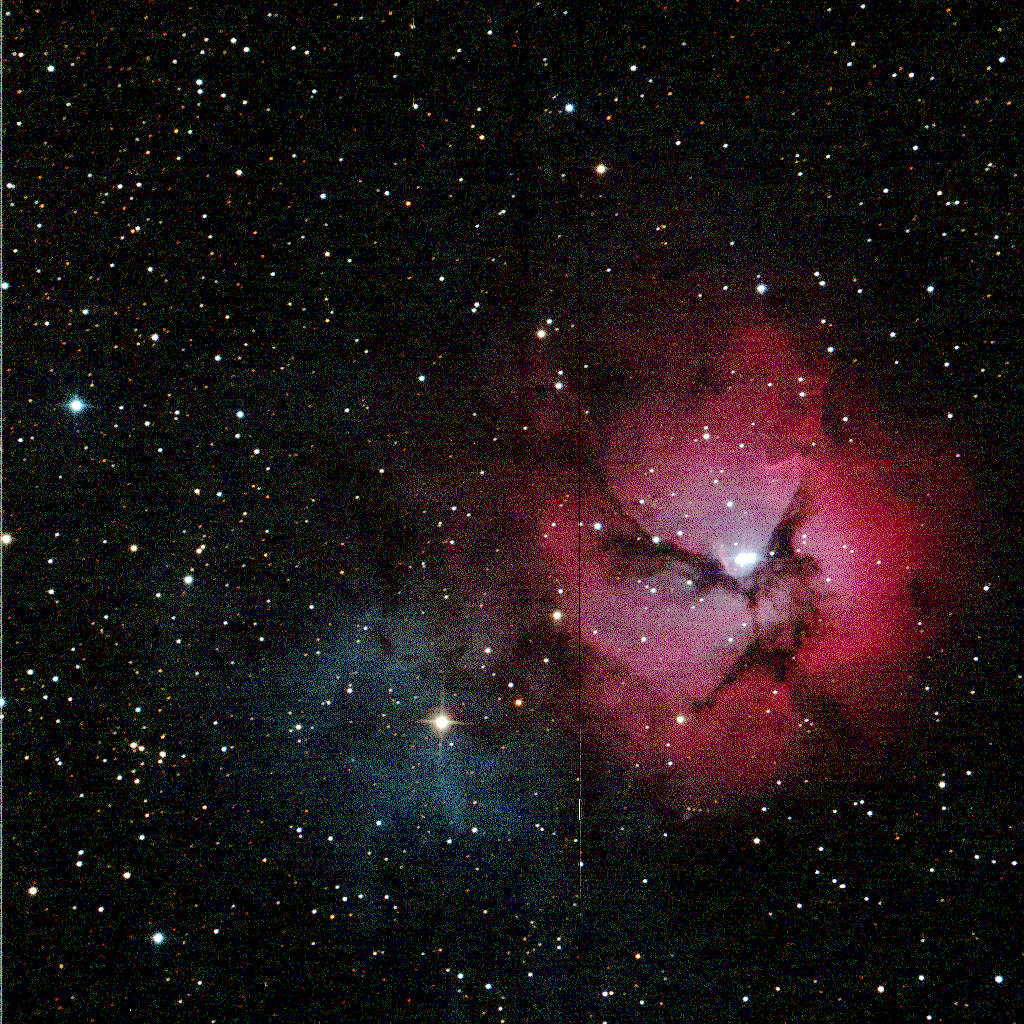
Figure 2

The Skynet Junior Scholars Professional Development Model
The Skynet Junior Scholars Professional Development model (SJS PD) takes a novel approach to educator PD by targeting both informal and formal educators, including 4-H leaders, planetarium educators, museum interpreters, and teachers. We provide educators with a visceral experience such that they will be committed to trying the program with youth in a variety of settings. Therefore, our model builds on the PD literature to foster an active, inquiry-based approach to building educators’ confidence and competence, and we do this by using a Technological Pedagogical Content Knowledge “TPACK” framework (Koehler and Mishra 2009; see Resources for more information on TPACK). SJS educators experience the same learning activities that youth may encounter, thereby scaffolding their technology knowledge (TK; e.g., navigating the SJS web portal, using telescopes, manipulating data) and disciplinary content knowledge (CK; e.g., knowing the types of objects in space, how telescopes work, how to interpret and share data) in context with discussions and readings centered around pedagogy to support development of pedagogical knowledge (PK; e.g., how to best motivate youth and structure the learning experience).
To best support SJS educators’ confidence and TPACK competence, we also experimented with different modes of delivery, including a three-day, face-to-face workshop hosted at one of our respective observatories and a six-week online workshop. Although the connections between SJS PD activities and TPACK are the same across both modes of delivery, we found that the extended six-week online model fostered greater learning and follow-through in participants (based on their responses to a survey), as they had more time to internalize the lessons, wait for data to be returned, record new data if necessary, and work on projects. Moving forward, SJS PD workshops will be self-paced and initiated once per semester, and SJS educators will be able to earn an “SJS Leader Certification” by completing training requirements.
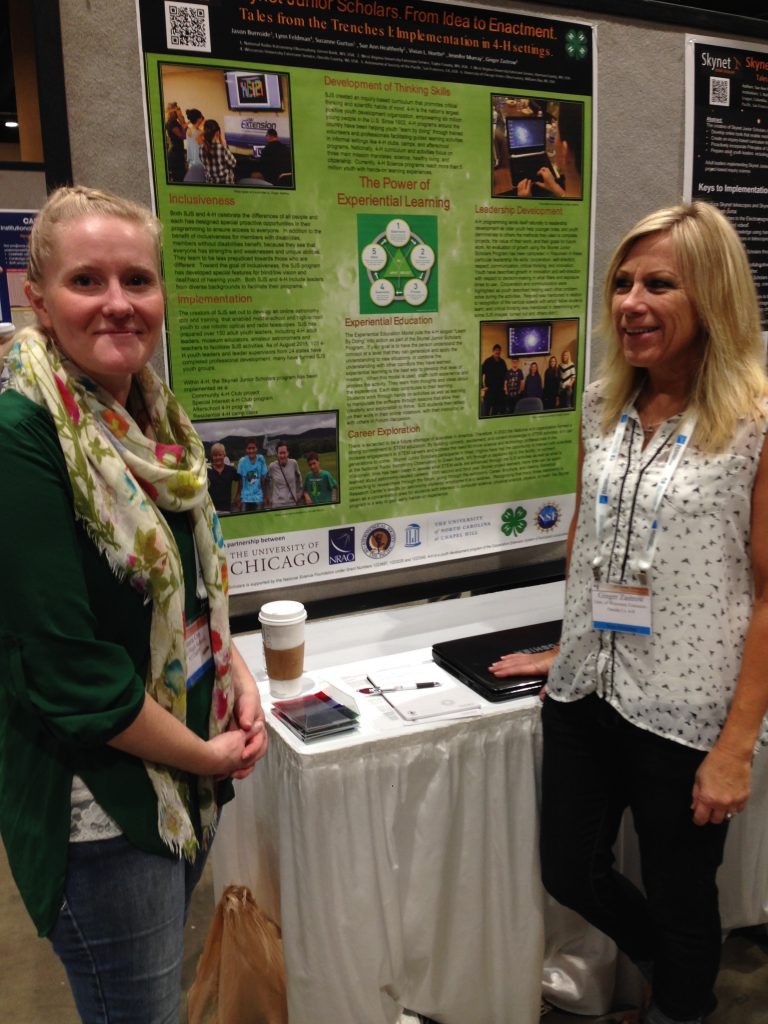
Developing SJS Educators’ TPACK
Practice with the SJS technology tools actually starts prior to the first meeting of the workshop: Participants sign in to the SJS web portal and watch a “How-To” video to submit their first telescope observation (i.e., their “first light,” a phrase astronomers use to describe new telescopes collecting data for the first time) and introduce themselves on the Discussion Forum. Participants then attend the SJS PD and are led through hands-on activities that build content knowledge and can be used to communicate astronomy concepts to learners in a variety of settings[2]. For example, the activity “Sizing Up the Moon” allows participants to model with clay the size relationship between the Earth and Moon (addressing the NGSS standard regarding Earth’s place in the universe). To support implementation, all materials for the hands-on activities are packaged into a kit that is shipped to educators before the PD workshop. Concurrent with the hands-on activities are online observational astronomy explorations that use the Skynet telescopes, building additional content understanding in the context of the SJS technology tools. For example, “Investigate Exposure Time” and “Investigate Filters” lead participants through taking their own data using the Skynet telescopes and systematically making comparisons to discover the purposes of the Skynet observing parameters (i.e., exposure time and filters).
The SJS PD model combines the hands-on and online activities with discussions on the nature of science and pedagogy. SJS educators are encouraged to think of questions that they or their students could investigate on their own. Converting a general “why?” query into a manageable question to investigate systematically can be one of the most difficult scientific process skills to acquire. Therefore, we have participants read the article, “A Quest To Improve: Helping Students Learn How to Pose Investigable Questions” (Sharkaway 2010) to catalyze their brainstorming about what makes a good scientific question and what can be systematically investigated with the tools and time available. Meeting challenges in helping youth develop their own investigations are at the forefront of these discussions. Again, educators engage in the same processes their youth will: They struggle to investigate their own questions and analyze their own data, and they create final presentations to share their methods, data, observations, and analyses (see Resources for team presentation examples). Following team presentations, whole-group discussions address what the SJS experience might be like for students, what types of challenges might occur, and which aspects of the investigations would need to be considered for youth with different prior knowledge and experience. Engagement with this pedagogical scaffolding can be extremely influential for SJS educators, as seen in the case studies below.
Beyond TPACK: Leveraging Educators’ Ingenuity to Plan for Implementation
The practical considerations involved in bridging in-school and out-of-school learning using SJS investigations include balancing time, space, and attendance constraints, from curricular and extracurricular demands to coordinating computer and internet access and managing a variety of youth attendance and engagement levels (particularly in informal settings). Each of these considerations is unique for different communities, schools, and students, so managing them requires a combination of independence, determination, ingenuity, and enthusiasm. These parameters are beyond the variables currently captured by TPACK frameworks, but they are important for educators to navigate during implementation. To prepare for these practical constraints, each SJS educator creates an “Action Plan” (see Resources) at the culmination of the SJS PD experience. In the “Action Plan,” SJS educators describe in concrete terms how they will create an SJS group. They detail the age range they work with, where they will recruit youth, how long they plan to engage youth, and which tools from the program they plan to use. Then, they design a plan that will work in the context of their home institution and community. The strength of this aspect of the SJS PD model is that it values educators’ community knowledge, connections, and abilities to create an effective learning environment for youth.
Extended Support: Professional Development Through Program Implementation
To sustain motivation and TPACK growth beyond PD training and throughout SJS educators’ program implementation with youth, we periodically offer a series of drop-in web chats. “Refresher” web chats allow participants to review core content and disciplinary practices from their initial PD training (e.g., how to process images and make astronomical measurements). We also offer “advanced” web chats for those who want to engage youth beyond the initial training material (e.g., how to do a collaborative project in asteroid research or radio astronomy). All of these web chats are recorded and made available asynchronously through the SJS web portal. The effectiveness of these SJS PD elements are supported by evidence from surveys, interviews, field visits, and online activity.
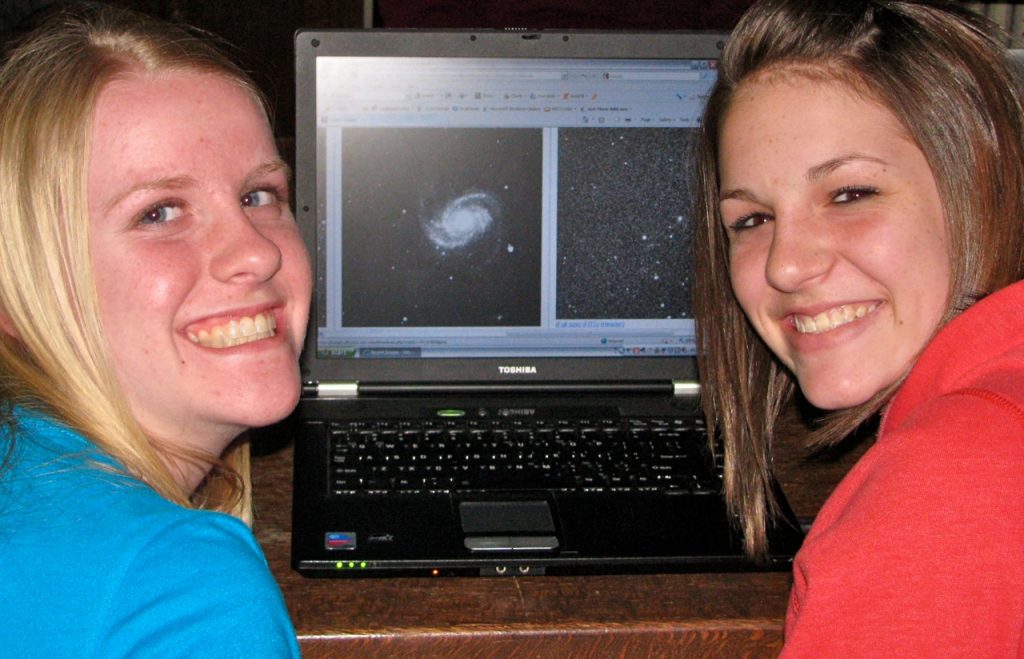
The SJS PD Impact
The main SJS PD evaluation question is, “What is the effectiveness of the SJS PD in supporting educators’ confidence and TPACK competencies in program implementation with youth?” Evaluation of the SJS PD comes from longitudinal program tracking through multiple phases (during the PD, after the PD and during implementation with youth, and after implementation with youth). We followed leaders via records from their “Action Plans” and activities on the SJS web portal and discussion forum, as well as our field observations, interviews, and e-mails. Our primary data sources for investigating the impact of the SJS PD on educators’ confidence and competencies were surveys and interviews. Formative surveys were given during the SJS PD and retrospective summative surveys were given after the SJS PD. Likert-scale survey questions assessed leaders’ confidence in leading youth through astronomy content and technological navigation (e.g., being able to solve technical problems as they arise), scientific practices (e.g., generating questions, making predictions, using a scientific reasoning), and different pedagogical approaches (e.g., assessing youth performance, adapting to different learning styles, and organization and management). A subset of 32 SJS educators provided data for the final SJS PD model,[3] and three case studies (see Resources) provide examples of how the SJS PD impacted individual educators.
SJS PD Impact on Educators’ Confidence and Competencies
Survey results show that after the SJS PD, educators generally felt well-acquainted with the SJS Explorations and had a basic familiarity with the related content, technology, and pedagogy. For example, 28 out of 32 SJS educators felt somewhat more or much more prepared by the SJS PD to lead an inquiry-based astronomy lesson for youth. However, despite feeling more prepared, several educators experienced some difficulty in following through with their SJS commitments. Of the 125 youth leaders who completed the SJS PD, 64, or 52%, created SJS youth groups, but of the 1,400 youth members of SJS, only 246 (about 18%) have completed at least one SJS Exploration. To understand the obstacles that SJS educators experience in engaging youth, we tracked their experiences during implementation, using interviews, field notes, e-mails, and online monitoring. Results indicate that variations in TPACK competencies (TK, CK, and PK) seem to explain variations in follow-through.
Regarding TK competencies, several SJS educators worried that, following the SJS PD, the technical challenges experienced during their training would present obstacles to providing positive experiences for youth. Evidence collected during implementation indicates that variable internet bandwidth, unreliable computer equipment, and long wait times between telescope image requests and receipt of data did challenge educators’ TK. However, most educators found creative solutions. For example, the security settings of the public library computers used by one SJS group prevented downloading of an SJS image processing program, so the educator brought his own laptop and passed it among students. Occasionally, telescopes were unavailable to users, but educators solved this challenge by preplanning with “back up” data. To assist educators, SJS staff worked with telescope owners and the SJS web design team to ensure that issues were resolved in a timely manner.
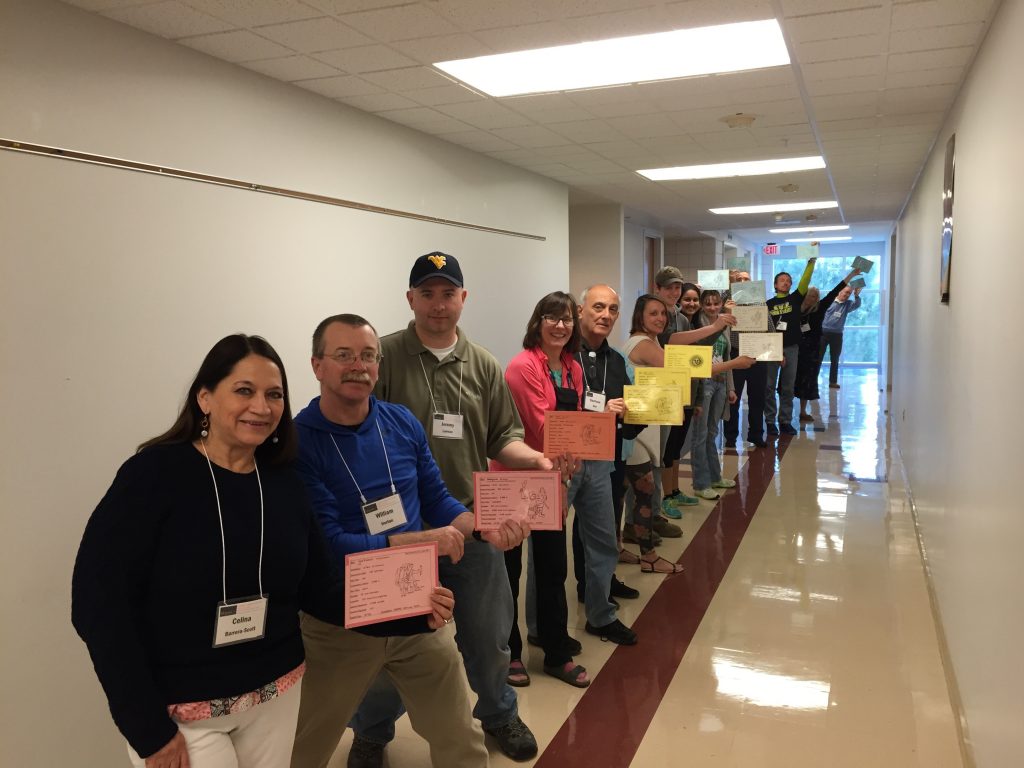
SJS educators also encountered and solved CK and PK challenges as they worked through the SJS PD and with youth. Although a large percentage (about 75%) of SJS educators had experience working with youth groups to provide STEM experiences, very few (less than 20%) had specific experience leading youth in exploring astronomy, causing some educators to worry about their CK and PK: “Because so much is so open-ended, I think keeping up with questions and sticking points in a way that relieves frustrations and encourages exploration will be challenging.” Chelsea’s case study (see Resources) shows the importance of educators experiencing the same learning progression as their youth to support CK and PK development. When she first started the SJS PD, Chelsea described in an interview that the content seemed “out of her league,” but over time, she found the confidence to “learn along the way.” She said that even while working with youth, she was sometimes inspired to “check out some question I thought up.” She described that although she had a sense of how to work with and motivate youth, the SJS PD “refined” her pedagogy. When her students seemed frustrated, Chelsea told them, “It’s okay. I didn’t know this stuff at first either,” and she showed them the team projects her fellow SJS educators created.
Furthermore, Jacob’s case study highlights how SJS PD pedagogical scaffolding can inspire a complete PK paradigm shift: “They [the SJS staff] would never give me an answer. It was, ‘Well, what do you think? What tools did you use to try to find the answer?’ … [They] turned me into a new-age learner.”
SJS educators’ interviews and discussion forum comments also indicated that the extended support offered by SJS staff (e.g., refresher and advanced web chats) was especially helpful in sustaining educators’ motivation, giving them renewed enthusiasm and strengthening the personal connections they felt to program staff and each other:
Great refresher today. Picked up several new tips about functions already there as well as new stuff. Excited to learn about the new forum setup. I’m particularly interested in easing and improving my Scholars’ accessibility to ‘Ask an Astronomer’ and engaging more with other group leaders about what works and what doesn’t. —SJS Educator Discussion Forum post
Gary’s case study shows how participating in extended SJS PD inspired him to lead students, with support from SJS staff and radio astronomers, through an advanced investigation of “uncharted territory” using the radio telescope on Skynet (Figure 3). Gary discussed the “a-ha” moments that both he and his students had as they “wrestled with their data” to “investigate anomalies,” and how rewarding these “cool moments” were for him as he personally witnessed students’ “great thinking”: “I am so proud of their tenacity.”
Figure 3
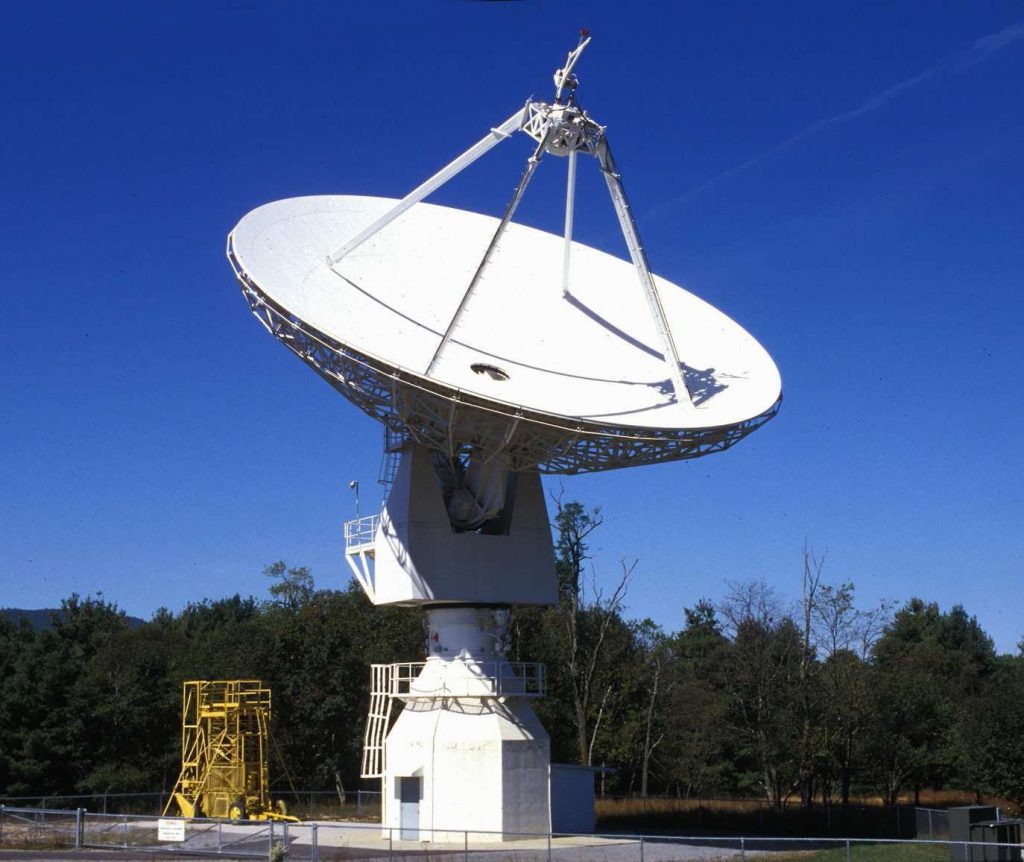
Finally, data from interviews, e-mails, discussion posts, and online activity confirmed the importance of the educators’ drive, passion, and agency. The most active SJS groups’ educators frequently expressed excitement about the SJS opportunity and a strong commitment to helping support youth in becoming the scientists of tomorrow. These educators believed that they had an essential role to play in orchestrating a supportive context, introducing youth to tools and ideas that can inspire life-long learning, providing a sounding board for youths’ ideas, channeling youth efforts in productive directions, and buffering youth against the experience of failure.
My dream is that this program will serve as a pilot for others like it in our goal of engaging and inspiring the scientists of tomorrow. —SJS educator comment during an interview
This sense of purpose and proactive attitude on the part of the educators is not captured in the TPACK framework or our survey instruments but was strongly present in interviews and field observations. We highlight this somewhat unexpected finding to encourage others designing PD opportunities for educators to identify and find ways to value and support the drive and enthusiasm of educators.
Forging New STEM Educational Pathways
Another somewhat unexpected finding is the importance of educators’ creativity in forging new STEM educational pathways. The case studies of both Jacob and Chelsea represent informal educators who were proactive in reaching out to schools in their area. Jacob’s case in particular highlights systematic logistical barriers to bridging in-school and out-of-school learning. Despite pushback from the school board administration and restrictive school policies, Jacob “went in from the ground up” by contacting the Gifted and Talented teacher (GT). She offered to help Jacob coordinate an SJS Curriculum Enhancement Unit (CEU) that GT students could miss class to attend once per week. Even Gary, who is a formal classroom science teacher, experienced logistical issues in bridging student learning beyond the classroom. He worked with students the one day per week when his school closes early and found that lunch periods were also a useful time for meeting with students outside of class. Therefore, although the case studies in Resources show the unique ways educators with diverse skill sets benefited from the SJS PD, they also point to important logistical issues to consider when designing STEM experiences that bridge in-school and out-of-school learning.
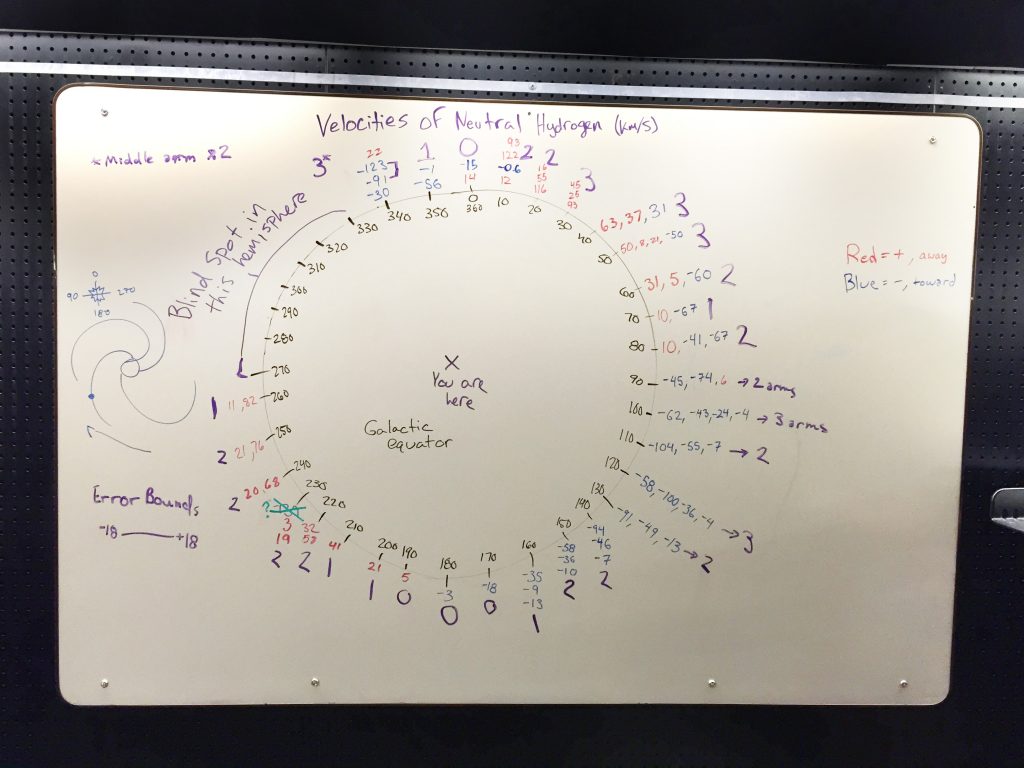
Recommendations
In designing and implementing SJS and training educators through the TPACK framework, we gathered a variety of recommendations and lessons learned that could be useful for other STEM program developers seeking to bridge in-school and out-of-school learning:
-
-
- Integrate a blend of TPACK elements into PD training (see workshop schedule in Resources) to build educators’ confidence and capabilities in interfacing disciplinary knowledge and practices to support STEM learning in youth. We found it particularly important to allow educators to follow paths of investigation that their students would follow during implementation.
- Value and support educators’ ingenuity, independence, and enthusiasm in developing an “Action Plan” for implementing the program in ways that work best with their unique communities and constraints. As the case studies illustrate, educators’ ingenuity is critical for being able to tackle contextual challenges while bridging formal and informal STEM learning.
- Offer sustained supports and resources beyond the PD and during implementation. Recognize that deep, authentic learning derives from the repeated, practical application of scientific ideas and observational contexts. PD supports we found especially useful were how-to videos, refresher and advanced web chats, and a forum for open communication among program staff, educators, youth, and professional scientists.
-
Finally, we note that the SJS program structure can serve as a model to others who are interested in developing authentic STEM opportunities for students that go well beyond astronomy. The utility of remote access to scientific equipment could extend to environmental science (e.g., weather satellites, water monitoring systems, ecological measurement devices). Scientists and educators working in these other fields can use our project as a catalyst to brainstorm potential interfaces for allowing students to become involved. We encourage others to consider some of our lessons learned:
-
-
- that complying with online child protection regulations requires a great deal of logistical care and planning,
- that ownership and aesthetic value of data are important motivators for engagement, and
- that periodically creating activity, such as seeding the discussion forum with new questions and adding collaborative project ideas, is necessary for maintaining enthusiasm and participation.
-
We note that with a three-year grant to support the web development and design of a student interface (i.e., web portal), educational activities, and PD, we were able to create a collection of tutorial videos and self-paced PD materials that allow us to sustain the program with minimal effort. Our administrative tasks now only involve hosting one introductory web chat per semester, creating new groups and managing telescope time, and communicating with participants through periodic e-mails and discussion forum posts.
Acknowledgments
Skynet Junior Scholars is supported by the National Science Foundation under Grant Numbers 1223687, 1223235, and 1223345 as a collaborative effort of the University of Chicago Yerkes Observatory, the National Radio Astronomy Observatory, the University of North Carolina at Chapel Hill, the Astronomical Society of the Pacific, and 4-H. We would like to thank the SJS educators for sharing their ideas and work though surveys, interviews, “Action Plans,” and the SJS web portal, particularly those who are represented in our case studies. We would also like to thank the article reviewers, whose thoughtful comments improved the quality of this manuscript.
[1] Skynet Junior Scholars also complies with the Child Online Privacy Protection Act (COPPA) to ensure child safety and privacy.
[2] SJS’s hands-on activities were originally developed by the Astronomical Society of the Pacific to provide informal science educators at science centers, nature centers, museums, and other informal education venues with new and innovative ways to communicate astronomy content to their visitors; however, the activities can easily be done in a typical classroom setting.
[3] The form of the survey changed during different iterations of SJS PD workshops, so only the two most recent cohorts of educators answered the same questions.


